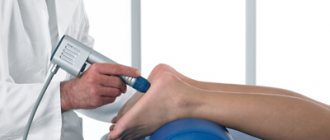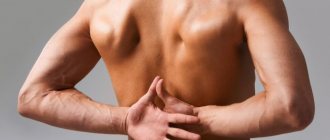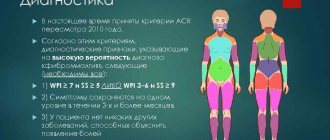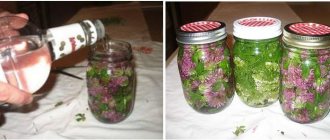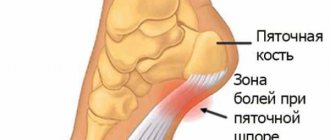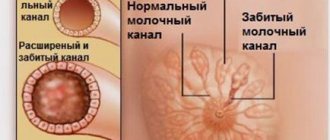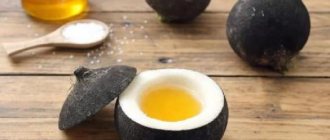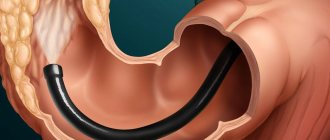September 9, 2016
Heel spur is one of the most common pathologies of the musculoskeletal system. It accounts for about 10% of all orthopedic diseases. Heel spur, or plantar fasciitis, is
inflammatory-dystrophic lesion of the plantar fascia, which occurs against the background of deposition of calcium salts in the area of the heel tubercle.
- Bile
- Dimexide
- Iodine
- Vinegar
- Salt
- Honey
- X-ray therapy
- Blockades
- Injections
- Medicines
Causes of heel spurs
The cause of heel spur formation is inflammation of the plantar fascia due to increased load on it or due to its insufficiency. The development of the inflammatory-degenerative process in the tissues of the aponeurosis is promoted by:
- flat feet with longitudinal deformation of the foot;
- sedentary lifestyle;
- excess body weight;
- long-term static loads on the feet (standing, walking in high heels, using uncomfortable shoes);
- sudden loads on the foot after a long period of rest;
- microtraumas during intense sports training.
Causes and mechanism of development
Deforming arthrosis can be primary, when clear causes cannot be identified, and secondary, developing after illnesses and injuries.
Primary arthrosis deformans is mainly an age-related disease. It has a connection not only with age, but also with family history, excess body weight and a sedentary lifestyle. Progresses slowly but steadily. Pathological processes in the joints are mainly associated with a decrease in the volume of synovial fluid, impaired tissue nutrition, and atrophy (reduction in volume) of articular cartilage. It becomes thinner, cracks, the bones are injured and this stimulates their growth with the formation of marginal growths - osteophytes, which deform the joint. Constant irritation contributes to the periodic occurrence of inflammation, but degenerative-dystrophic processes still predominate.
Secondary osteoarthritis develops at any age after illnesses and injuries. Main reasons:
- acute injuries - intra-articular fractures, dislocations and subluxations, severe bruises;
- constant microtrauma associated with the professional activities of athletes is one of the common causes;
- congenital dysplasia (developmental abnormalities);
- osteochondropathy – destruction of joints due to malnutrition; for example, Perthes disease, which develops in adolescence;
- metabolic disorders - obesity and sedentary lifestyle, disorder of purine metabolism with deposition of uric acid salts in the joint cavity (gout), etc.;
- endocrine diseases - diabetes mellitus, hormonal disorders in men and women associated with an imbalance of sex hormones, etc.;
- inflammatory processes - chronic arthritis - rheumatoid, psoriatic, etc.;
- diseases that cause circulatory disorders in the lower extremities - varicose veins (more common in women), obliterating endarteritis, atherosclerosis of the arteries of the lower extremities (more often in men).
If the underlying cause continues to operate (for example, inflammation or endocrine disorders), this contributes to the rapid progression of deforming arthrosis.
Therefore, secondary pathological processes are more dangerous; they require timely consultation with a doctor to treat the underlying disease.
Symptoms of heel spurs
The main manifestation of pathology is pain. In the first stages of the disease, it occurs while walking. As the severity of the pathology develops and worsens, the pain becomes stronger and more acute. Particularly characteristic of plantar fasciitis is the “starting” pain that occurs when movement begins after a long break or sleep.
During examination of the foot, no obvious clinical signs are usually observed; in some cases, slight swelling in the heel area is noted. Palpation reveals pain in the lateral areas of the heel bone and in the middle of the heel from the side of the sole.
The intensity of pain and the severity of symptoms of pathology may vary and do not depend on the size of the bone formation. Thus, even a small growth in the area of the heel tubercle can cause acute burning pain and cause complete disability for the patient, while the formation of a large osteophyte in another patient may manifest only minor discomfort while walking.
Today, there are many known ways to treat heel spurs - both clinical and folk. In this article we will look at both in detail. The first part of the article is devoted to home treatment methods for heel spurs - we will not judge their effectiveness, but will only give a brief overview of the methods of their use.
However, let us remind you that any attempts at self-treatment without consulting a competent doctor are fraught with the development of even more serious complications and can only lead to a deterioration in the patient’s well-being. It is necessary to understand that the use of home treatment methods instead of full-fledged medical therapy will only slow down the patient’s recovery and lead to the progression of the disease.
Traditional methods of treating fasciitis
Resorting to folk remedies for treating spurs is not prohibited even by official medicine. Traditional recipes can be a good alternative if, for some reason, the drugs do not have an effect, and ultrasound treatment is not suitable for health reasons.
Many folk remedies have proven their effectiveness and safety. But nevertheless, it is necessary to consult with your doctor. First of all, because a heel spur can be easily confused with another disease - a heel wart.
This formation has a hard core that causes symptoms similar to typical plantar fasciitis. It can be difficult to distinguish between these diseases on your own, so getting diagnosed is still a good idea.
Another important point is to choose the right treatment method. Some of the recipes are designed specifically to reduce plantar warts. Therefore, if, after treating heel spurs with folk remedies, the symptoms do not go away, it means that the prescription was chosen incorrectly, or the wrong ailment was treated.
There are 4 main ways to treat the disease:
- warming up the diseased area;
- 24-hour compress;
- compress at night;
- massage.
Garlic-based compress
The effectiveness of all remedies is different: some can eliminate discomfort and pain in 3 procedures, some need to be repeated much longer, sometimes up to a month.
Orthopedic insoles for heel spurs
One of the most effective means used to treat and prevent the formation of heel spurs are orthopedic insoles. Their use is necessary to unload the foot and improve shock absorption of the musculoskeletal system when walking. Individual orthopedic insoles, made to order by an orthopedic specialist, most effectively eliminate pain and relieve stress on the feet during movement. In this case, the anatomical shape of the patient’s foot is taken into account, which allows you to accurately select and adjust the shape of the insoles. Wearing orthopedic insoles provides maximum comfort for the patient, both while walking and in a static position.
The medical department manufactures and selects individual Formthotics orthopedic insoles. To do this, an orthopedic doctor using a special device - a plantoscope - examines the condition of the tissues of the feet, identifying possible deformations of their longitudinal and transverse arches.
After a thorough plantoscopic diagnosis, the doctor makes individual insoles that most accurately follow the anatomical lines of the patient’s feet and create ideal conditions for the functioning of their musculoskeletal system. The insoles are heated with a hairdryer to make the material plastic, the patient stands on them and the doctor records the exact imprint of the feet in a static position and while walking.
Continuous wearing of Formthotics custom insoles stops the progression of plantar fasciitis, stimulates the restoration of foot tissues and promotes their healing, accelerating the patient's recovery.
Heel pads
One of the types of orthopedic insoles are heel pads. These are orthopedic products, which are shock-absorbing inserts under the heel. They are made from various natural or synthetic materials (leather, balsa, gel, silicone) to reduce the impact load on the foot and reduce pain in the heel during movement.
Patch for the treatment of heel spurs
Among the home remedies for heel spurs, special pharmaceutical plasters are quite common. In particular, pepper patch is used for severe pain for applications on the heel area for several days.
What effect does the adhesive plaster have in this case?
The active components with which it is impregnated (pepper, belladonna extract) have a local irritating effect, increasing blood circulation and lymph flow in the tissues of the heel area. This reduces local swelling and inflammation, and also reduces the intensity of pain.
No less popular is the Chinese patch for the treatment of heel spurs. Its therapeutic effect is to stimulate the reflexogenic zones of the heel area along with an anti-inflammatory effect on the tissue.
Why is deforming arthrosis dangerous?
Despite its slow progression, arthrosis deformans is a disease with serious consequences.
Degrees/stages of deforming arthrosis
There are different classifications of deforming arthrosis. In our country, most specialists adhere to the clinical and radiological classification developed in the early 60s of the last century by N. S. Kosinskaya. According to this classification, there are 3 degrees of deforming arthrosis:
- Deforming arthrosis of the 1st degree (early stage). It may be asymptomatic or accompanied by slight pain during exercise. X-rays show no changes or some reduction in the joint space and slight thickening of the articular surfaces of the bone tissue (initial manifestations of osteosclerosis).
- Deforming arthrosis of the 2nd degree (progressive stage). The pain is severe, aching, and often appears not only during the day, but also at night. Crepitation during active movements, the first symptoms of limitation of joint function and mobility. On the radiograph: the joint space is reduced by 2–3 times, initial signs of articular deformation (osteophytes), severe osteosclerosis.
- Deforming arthrosis of the 3rd degree (advanced stage). The pain is constant, painful crepitus due to the appearance of articular mice - separated bone segments. On the radiograph: the joint space is practically absent, overgrown osteophytes significantly deform the joint. Severe osteosclerosis, areas of necrosis with the formation of cystic cavities and bone fragments (sequestra) are visible.
The stages of deforming arthrosis are usually
Don’t despair: an experienced doctor can help a patient at any stage of the disease!
Possible complications
If the disease is not treated or treated independently without seeking medical help, the following complications cannot be avoided:
- constant severe pain not only during exercise, but also at rest;
- persistent articular deformation;
- loss of limb function - difficulties in flexion, extension, rotation and even complete immobility;
- decreased performance and disability.
Exacerbations
Increased pain is usually associated with exacerbation of the inflammatory process - synovitis. The articular surface swells slightly, becomes painful, sometimes slight redness of the skin appears, and the temperature rises to 37. Sometimes increased pain is associated with changes in weather (changes in atmospheric pressure, etc.). In case of exacerbation you need:
- take a pain reliever: Diclofenac, Ibuprofen, Nise, etc.;
- apply a gel (ointment, cream) with the same anesthetic composition to the painful area;
- lie down, give the affected area of the body an elevated position;
- after the pain subsides, go to the clinic; If the pain is very severe, call a doctor at home.
Ointment for the treatment of heel spurs
To treat heel spurs at home, various anti-inflammatory ointments and creams are often used. Among them, indomethacin and hydrocortisone ointments are most often used.
When treating the heel area, indomethacin ointment has an analgesic effect on the tissue and eliminates local inflammation. Hydrocortisone ointment, which has a hormonal effect, reduces local swelling and the intensity of the inflammatory process. For home treatment of heel spurs, anti-inflammatory pain-relieving ointments ibuprofen, diclofenac and voltaren are also used.
However, it should be remembered that all of the listed medications do not eliminate the causes of heel spurs, but only smooth out the symptoms of the disease. In addition, their long-term and uncontrolled use in the absence of proper etiotropic treatment can lead to the development of side effects and aggravation of the severity of the disease.
General information about deforming arthrosis
Deforming arthrosis (osteoarthrosis, osteoarthritis) is a metabolic-dystrophic disease accompanied by the destruction of cartilage with subsequent proliferation of bone tissue and joint deformation. Constant mechanical irritation of all articular tissues leads to periodic inflammation in the synovium (synovitis), which further aggravates the patient’s condition.
The combination of synovitis with dystrophy and deformation of the joint has led to the fact that the disease is often called osteoarthritis, as well as osteoarthritis and deforming arthrosis. In accordance with the 10th International Classification of Diseases, these names are identical. The disease code according to 10 ICD is M15-M19.
Previously, it was believed that this is an age-related disease that develops against the background of aging of the body. But it has now been established that osteoarthritis can develop at any age, including in children. Depending on a number of reasons, the disease can progress slowly or rapidly. Therefore, it is preferable to treat it in the initial stages, when the process is easier to stop or slow down. But you can help a patient even at an advanced stage.
Exercises for heel spurs
One widely used home treatment for heel spurs is foot exercises. The main goal of the exercises is to stretch the plantar fascia and strengthen the muscles of the longitudinal arch of the foot, which helps to increase the elasticity of the tissues and strengthen them.
The most effective exercises are rolling with the foot of a tennis ball, picking up small objects from the floor with the toes, etc. Exercises should be done after mandatory preliminary warm-up and warming up of the muscles.
Rotation of the feet has a beneficial effect on joint mobility, the condition of the muscles and ligaments of the legs. These exercises are performed while sitting on a chair: with your legs stretched forward, you rotate your feet in and out for 15 seconds, making sure that your thumbs are pointing upward.
Thanks to therapeutic exercises, blood supply to the plantar aponeurosis and foot muscles is improved, local metabolic processes are activated, tissue nutrition is improved, which helps accelerate their healing and reduces the risk of microtrauma.
Massage for heel spurs
Massage is widely used to treat heel spurs at home. The purpose of massage for plantar fasciitis is to relieve muscle spasm, increase microcirculation in the affected area, activate local metabolism, reduce pain and improve tissue trophism. The massage technique combines stroking, rubbing, kneading tissue in the heel area and the entire sole, pinching and pressing.
The therapeutic effect of massage in this case can only be obtained when it is combined with other therapeutic methods (physiotherapy, drug treatment, etc.).
Symptoms of deforming arthrosis
The main symptoms of deforming arthrosis are joint pain, deformation and impaired joint function. Primary age-related arthrosis occurs and progresses slowly. The course of secondary arthrosis depends on the cause of its development - injury or disease.
First signs
The first signs of deforming arthrosis usually disappear within 5-10 minutes
At the initial stage, there is no deformation of the joint or impairment of its function. The pain is mechanical in nature and appears after prolonged walking or standing. At rest they pass quickly enough. Slight starting pain and slight stiffness of movement are also characteristic - these symptoms appear after a night's sleep or a long stay in a forced position and disappear within a few minutes after the start of physical activity. But this is already the first bell - a signal that you need to see a doctor.
Obvious symptoms
The pain after exercise is more intense and does not go away immediately. Prolonged aching night pain appears, and sometimes painful convulsive muscle twitching. Muscle pain can be of a long-term reflex nature, associated with increased load on the limb.
When moving, a characteristic crunching sound appears - crepitus, which indicates unevenness of the articular surfaces. Periodically, the skin in the affected area swells and becomes slightly inflamed, the pain becomes constant, and the body temperature may rise, but after some time these symptoms go away without treatment. This indicates inflammatory processes in the synovium - synovitis. After each exacerbation of synovitis, the progression of degenerative-dystrophic processes is activated. Often at this stage the patient requires support when walking and uses a cane. Over time, the joint becomes deformed and gradually loses its function.
On the fingers you can sometimes see bone growths - Heberden's and Bouchard's nodes, changing the shape of the hand.
There is good news - all this can be treated. But you need to choose the right clinic, where doctors have experience in treating such diseases.
Dangerous symptoms
The following symptoms are a signal that you need to urgently consult a doctor:
- joint pain has become constant, worsening at night;
- periarticular tissues periodically swell and become inflamed, sometimes this is accompanied by a slight increase in body temperature;
- the joint has increased in volume due to bone growths;
- movements are accompanied by crepitation;
- the limb is difficult to bend and straighten;
- you have to walk with a stick.
If you experience such symptoms, do not delay, seek medical help immediately.
Treatment of heel spurs with folk remedies
There are many ways to treat heel spurs using traditional medicine.
Bile
Medical bile, which can be purchased at a pharmacy, has long been used for therapeutic compresses for heel spurs. When applied to tissue in the area of the pathological focus, the drug has a warming, analgesic effect and accelerates the resolution of the inflammatory process.
Dimexide
Dimexide is a fairly popular remedy for home treatment of heel spurs. A bandage is moistened with the drug solution and applied as compresses to the affected area. By acting locally on tissue, dimexide reduces pain and the intensity of inflammation, stimulates tissue metabolism, accelerates the resorption of infiltrates and tissue regeneration.
Iodine
Iodine solution is also used for topical treatment of plantar fasciitis. Applications of iodine solution have a local warming and antiseptic effect on tissue, accelerate local blood flow, improve tissue nutrition, gradually eliminating inflammation.
Vinegar
To get rid of heel spurs in folk medicine, a mixture of vinegar, butter and a chicken egg is used. The thoroughly mixed mixture is applied in the form of compresses to the heel area in order to activate local blood circulation and metabolism, reduce pain and accelerate the resorption of bone growth.
Salt
Salt compresses and baths are also considered one of the most effective home remedies for heel spurs. Salt applications have an analgesic, anti-inflammatory and absorbable effect on tissue.
Honey
Compresses of honey and salt applied at night gradually relieve heel pain, improve metabolism and tissue nutrition, accelerate the resorption of painful infiltrates and relieve acute inflammation.
Where can I buy
To obtain a guaranteed result of treatment at home according to traditional recipes, the use of high-quality medicinal raw materials is of no small importance. The online store “Russian Roots” offers a large assortment of ready-made folk remedies for eliminating spurs and individual ingredients for making them yourself at home. Courier delivery is available in Moscow and the Moscow region, and delivery by mail is available in the regions. You can also purchase this product in our network of herbal pharmacies.
Attention! All materials published on our website are protected by copyright. When re-publishing, attribution and a link to the original source are required.
Clinical treatments
No matter how effective traditional medicine may seem, limiting yourself to their use is absolutely unreasonable and unacceptable. A full medical examination and the prescription of adequate therapy are absolutely necessary, because plantar fasciitis is a serious disease.
Which doctor should you contact?
If you experience symptoms of a heel spur, you should consult an orthopedic doctor or surgeon. After examination and carrying out the necessary diagnostic tests, the doctor prescribes a treatment regimen, selects suitable orthoses, and, if necessary, gives a referral to see specialists of another profile (physiotherapist, massage therapist, exercise therapy instructor, etc.).
What are the most commonly used clinical treatments for heel spurs?
X-ray therapy
Radiation therapy is used when conservative treatment is ineffective and pain is persistent. Local exposure to x-rays on tissue in the area of bone growth produces a prolonged analgesic effect. Treatment is carried out in several sessions, the duration of one procedure is about 10 minutes. Contraindications to X-ray therapy are pregnancy and breastfeeding.
Blockades
Drug blockades are carried out in cases where conservative therapy for plantar fasciitis does not bring the desired result. Injections of drugs into the area of the pathological focus have an analgesic effect and eliminate inflammation in the tissues.
Injections
For intense pain in the heel area, injections with hormonal drugs of steroid origin (hydrocortisone, diprospan, kenalog) have a good effect. Injections of these drugs into the osteophyte area quickly relieve pain and relieve inflammation.
Medicines
Conservative treatment of heel spurs is carried out in combination with drug therapy. The group of medications used in this case includes:
- analgesic drugs;
- non-steroidal anti-inflammatory drugs (ibuprofen, diclofenac);
- hormonal drugs of steroid origin (hydrocortisone);
- local anti-inflammatory drugs (dimexide, etc.).
Treatment of heel spurs at the ALFA TECHNOLOGIES clinic
Medical treatment of heel spurs is performed using conservative methods, including physiotherapy, pharmacotherapy, massage and drug blockades. The most pronounced therapeutic effect in this disease is provided by shock wave therapy - a unique treatment technique based on the effect of low-frequency acoustic shock waves on tissue.
Penetrating into the affected area to a clearly defined depth, wave vibrations cause a whole range of positive changes in the tissues:
- Blood circulation and lymph circulation improves.
- Local metabolism becomes more intense.
- The structural elements of bone formation become loose and dissolve.
- Spasmed muscles relax.
- The local inflammatory reaction is eliminated.
- The pain gradually decreases, and by the end of the therapeutic course it disappears completely.
- The processes of tissue repair and restoration are activated.
Complete treatment of heel spurs using the shock wave method involves completing a course of 5-8 procedures. The effectiveness of this treatment is very high: at the end of the course, complete disappearance of painful symptoms and recovery occurs in 97% of patients.
Treatment of plantar fasciitis with the shock wave method has a number of advantages over other methods:
- Absolute safety and harmlessness (virtually no contraindications);
- Pain and signs of local inflammation disappear after the first procedure;
- Treatment does not require the use of medications or pain relief;
- Exposure to acoustic waves improves the absorption of drugs into affected tissues and increases the effectiveness of pharmacotherapy.
Shock wave therapy is an advanced technique that guarantees rapid healing for heel spurs. Come to us - we will help you restore the health of your feet. Discover a world of ease of movement - it will take care of you!
